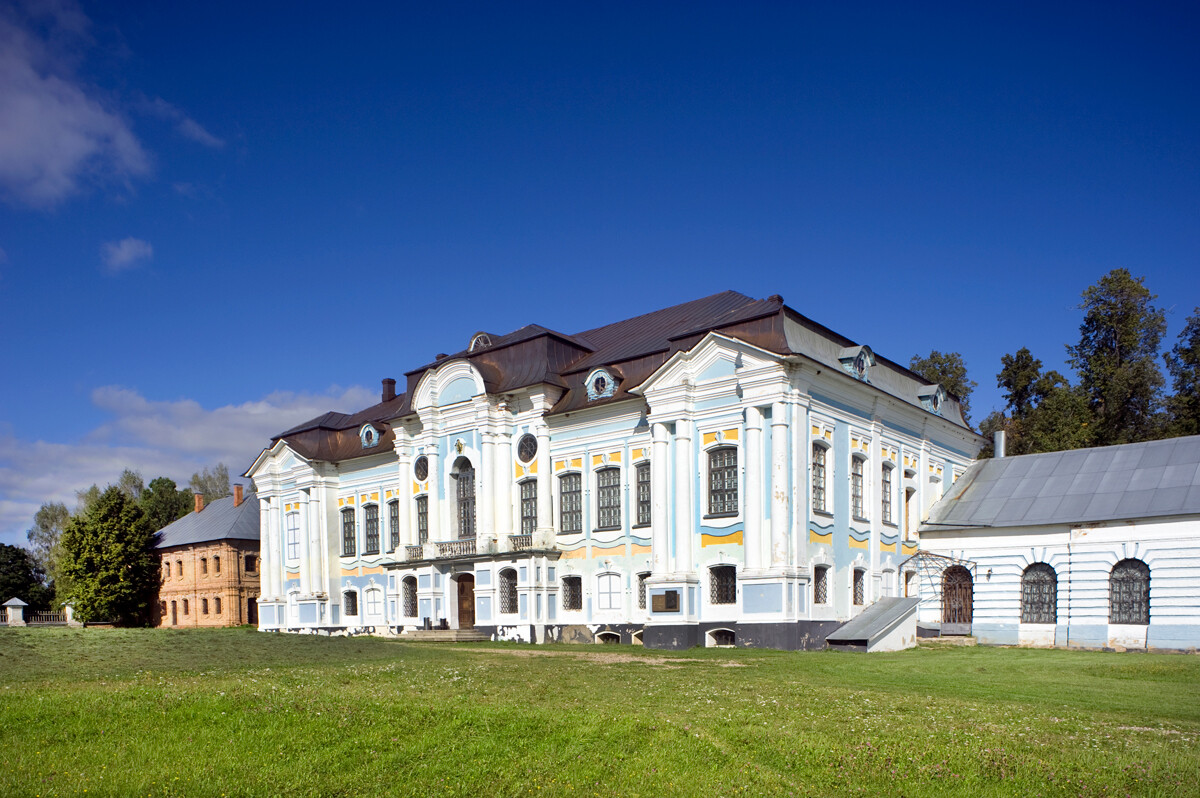
Khmelita estate (near Vyazma). Grand manor house, courtyard facade. August 23, 2012
William BrumfieldOne of the major Russian successes in architectural and cultural preservation over the past few decades has been the restoration of the Khmelita estate, linked to the life of one of Russia’s most beloved playwrights. No, the dramatist is not Anton Chekhov, but Alexander Griboyedov (1795-1829), author of a single play, ‘Woe from Wit’, that is perhaps for Russians the best known and beloved of all.
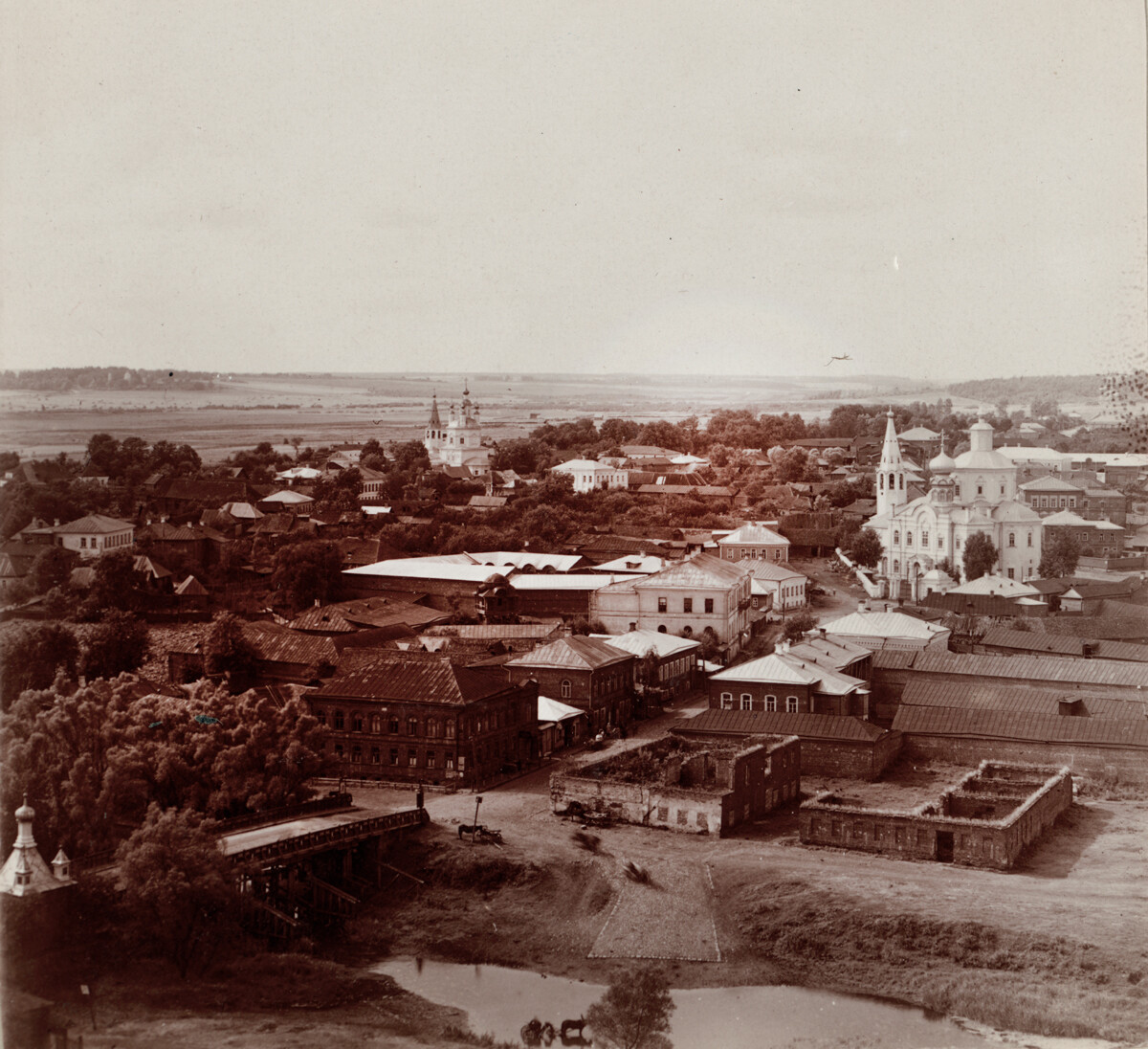
Vyazma from Trinity Cathedral bell tower. View northwest toward fields in the direction of the Khmelita estate. Church of the Annuciation (left) & Church of Entry into Jerusalem, both destroyed during the Soviet period. Summer 1912
Sergey Prokudin-GorskyKhmelita is located some 35 km to the northwest of Vyazma, which the pioneering Russian color photographer Sergey Prokudin-Gorsky visited in the summer of 1912 as part of a project to document sites connected with the centennial of the Napoleonic invasion of Russia. Although Prokudin-Gorsky did not record Kmelita, he climbed a Vyazma bell tower and photographed the rolling fields leading northward to the estate. My own visits to Khmelita occurred between 1992 and 2014.
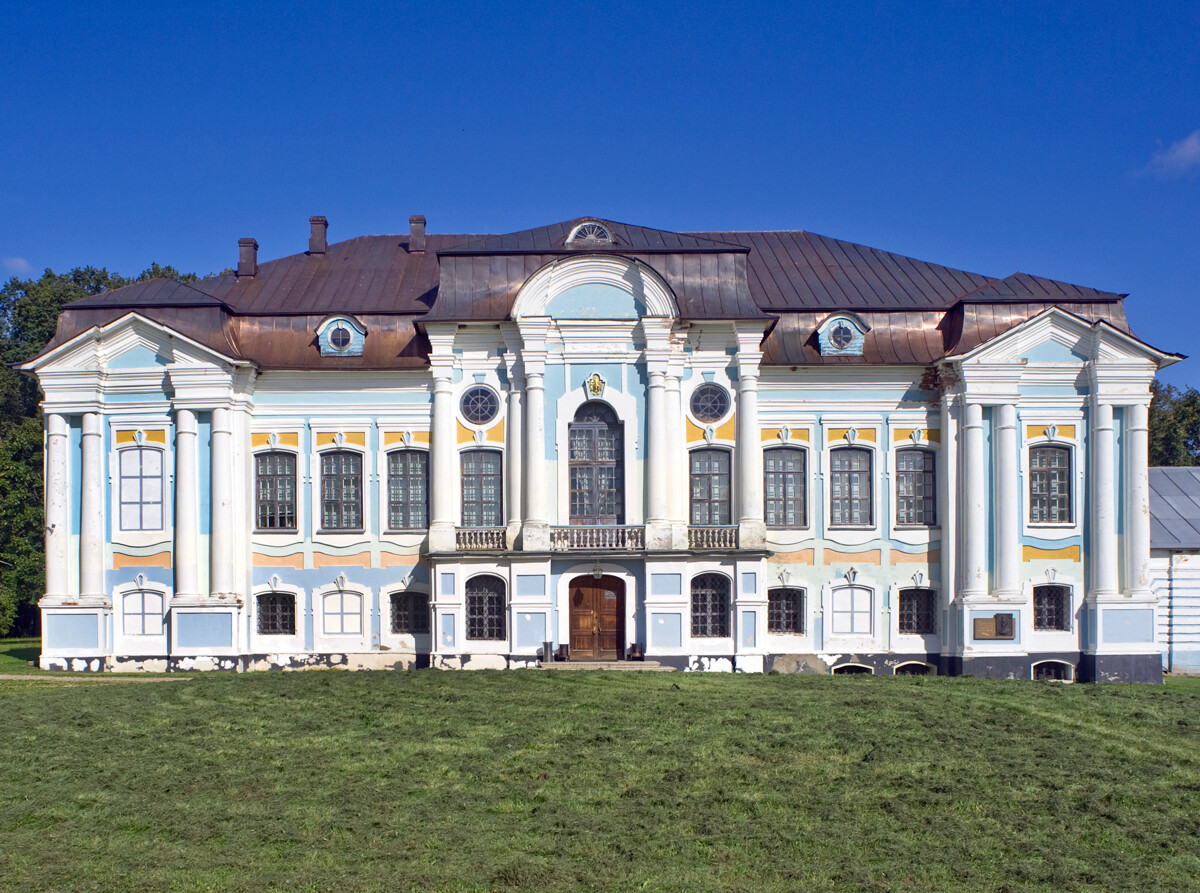
Khmelita estate. Grand manor house, courtyard facade. August 23, 2012
William BrumfieldThe Russian country estate has long been associated with Russian literary classics. Few are the 19th century writers who did not have some intimate connection with that milieu, from Leo Tolstoy’s beloved Yasnaya Polyana to the Dostoevsky family’s modest Darovoye. Among those writers Alexander Griboyedov (1795-1829) must be included, a close acquaintance of Alexander Pushkin and author of the satiric comedy ‘Woe from Wit’, one of the undying classics of Russian literature.
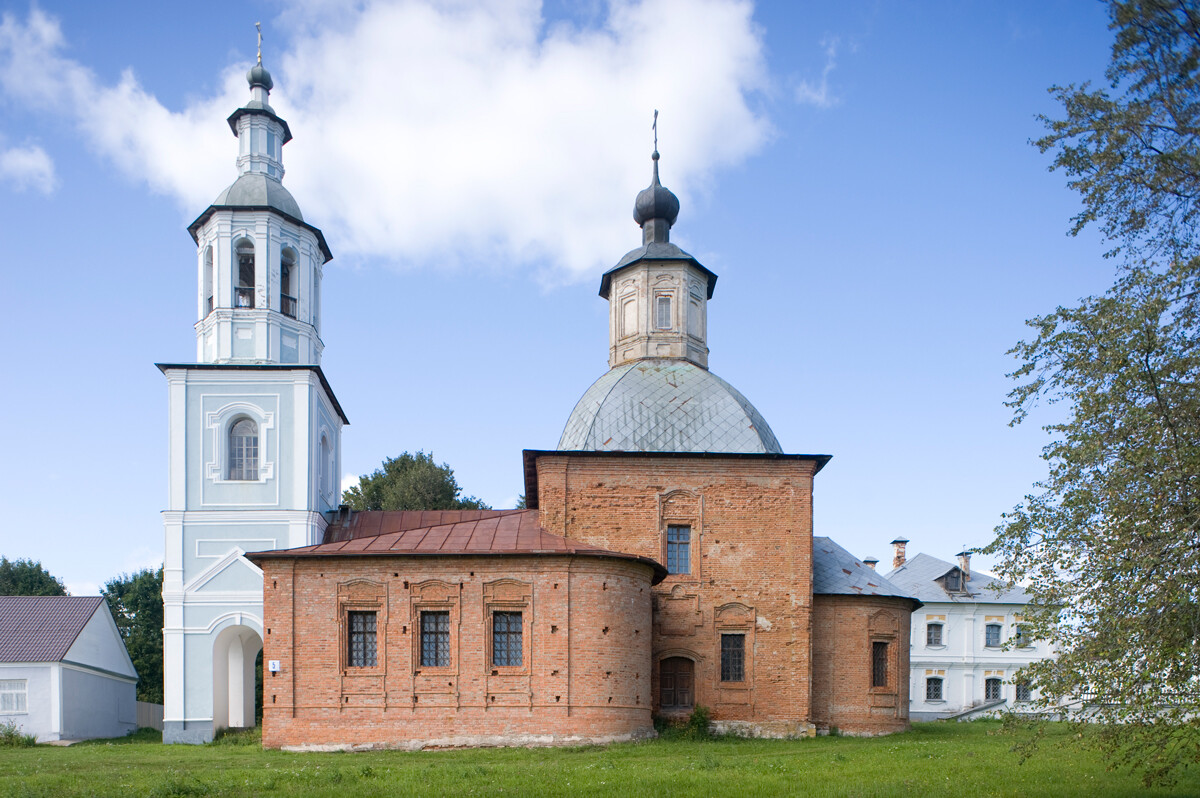
Khmelita estate. Church of the Kazan Icon of the Virgin, south view. August 23, 2012
William BrumfieldIndeed, the country estate (usadba) has played a major role in Russian history and culture, generally. With the cataclysms of the 20th century many of the estate houses, large and small, vanished, whether through outright destruction, vandalism or neglect. And the losses have continued to the present.
Yet, there are examples where perseverance and dedication, skill and luck have led to the resurrection of an abandoned property. Such is the case of the Griboyedov family estate of Khemlita, located near Vyazma in Smolensk Province. In addition to its architectural distinction, the magnificent estate is known for its connection to Alexander Griboyedov.
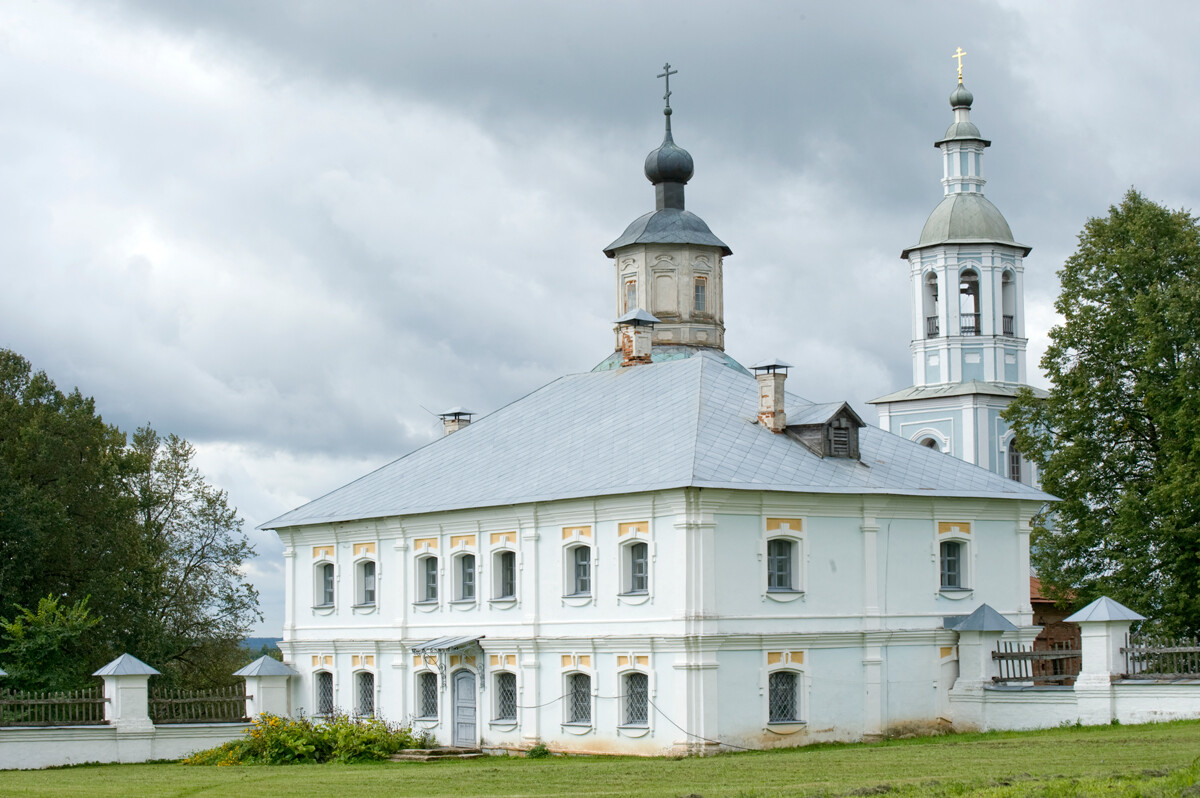
Khmelita estate, southwest service building. Background: Bell tower of Church of the Kazan Icon of the Virgin, northeast view. August 23, 2012
William BrumfieldOwned by the princely Buinosov-Rostovsky family during the 16th century, the estate was acquired at the end of the 17th century by Semyon Griboyedov, a military commander in the 1680s. In 1747, Khmelita passed into the hands of Fyodor Griboyedov, also a military officer, who began a major rebuilding of the estate in 1753.
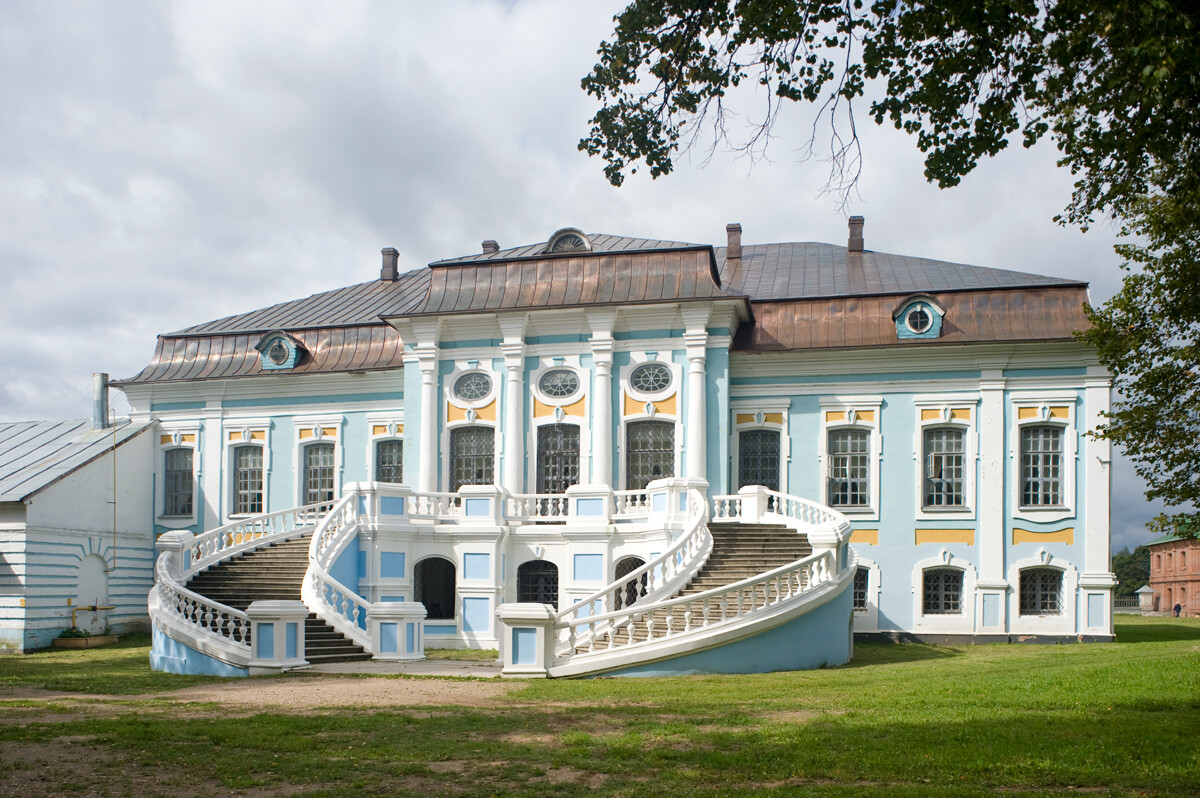
Khmelita estate. Grand manor house, park facade. August 23, 2012
William BrumfieldThe grand mansion is a rare surviving example of the baroque style prevalent during the reign of Empress Elizabeth (1709-1761), with stuccoed brick facades painted in a pastel color with white trim. The facades are marked with paired attached columns, curved pediments, circular and oval windows. The main floor of the interior consisted of enfilades of state rooms, with a two-story hall in the center.
The park façade opens onto a central terrace with a graceful curving staircase descending on either side to the landscape park. In addition to the mansion, the expansive ensemble includes four attached service wings, as well as a church dedicated to the Kazan Icon of the Virgin (1759).
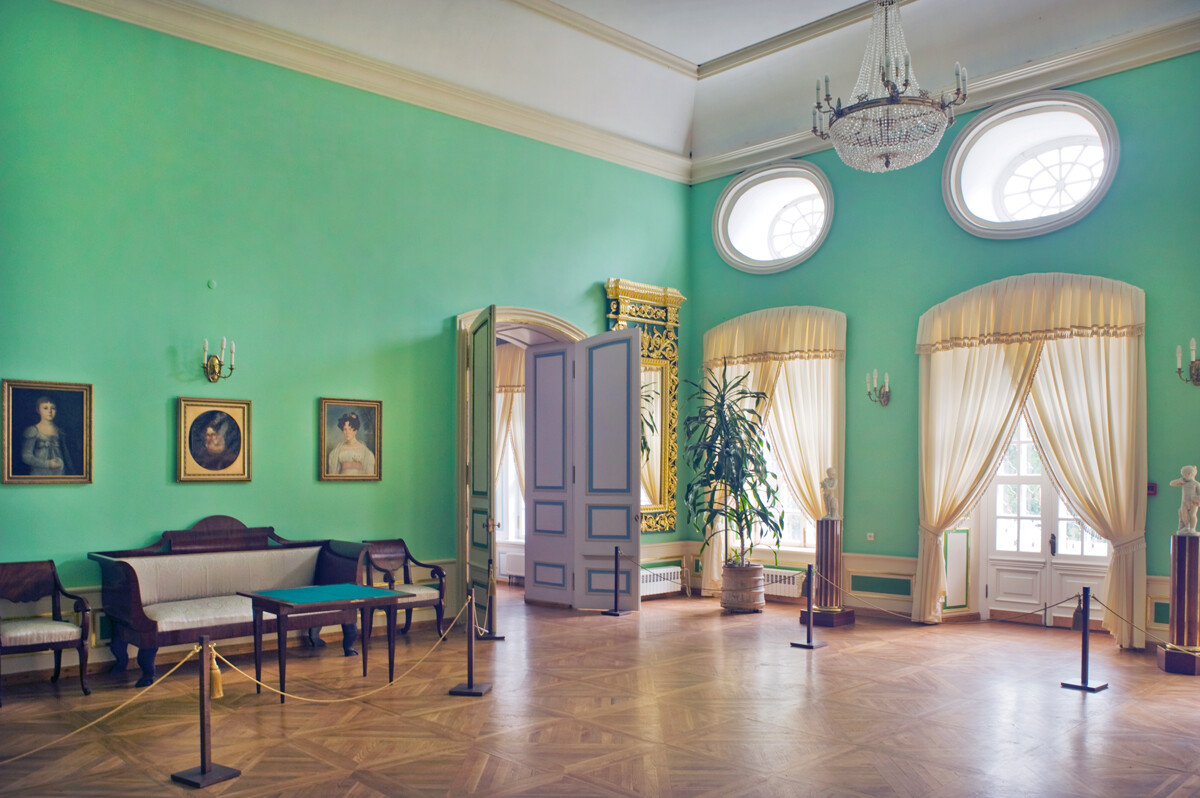
Khmelita estate. Manor house, main hall (ballroom) with oval windows on park facade. August 23, 2012
William BrumfieldAt the beginning of the 19th century, Khmelita was owned by Aleksey Fyodorovich Griboyedov, whose sister Anastasia had married Sergey Griboyedov, a retired army officer of little means. Anastasia Griboyedova placed great faith in the authority of her wealthy brother Aleksey, who apparently served as a surrogate father for her son Alexander, born in January 1795.
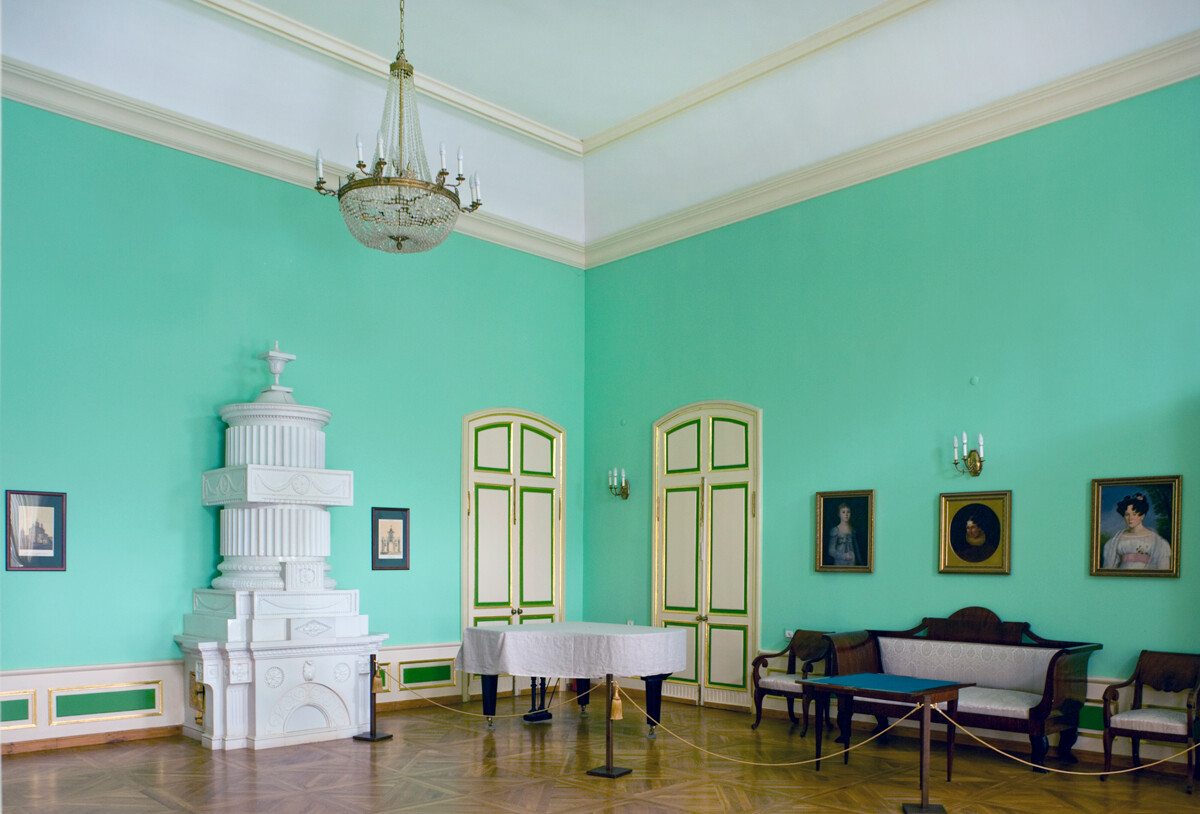
Khmelita estate. Manor house, main hall (ballroom) with white ceramic stove in neoclassical style. August 23, 2012
William BrumfieldThus, the young Alexander Griboyedov was a frequent guest at Khmelita, particularly in the summer. Through his uncle’s position in Moscow society, Griboyedov was well placed to observe the manners and mores of Russian nobility. Griboyedov applied this knowledge to deft satiric effect in his verse play ‘Woe from Wit’, completed in 1824, but published only in brief fragments during his lifetime, because of censorship. Despite the censor’s disapproval, the manuscript circulated widely among Russia’s literary elite and was acclaimed by Pushkin.
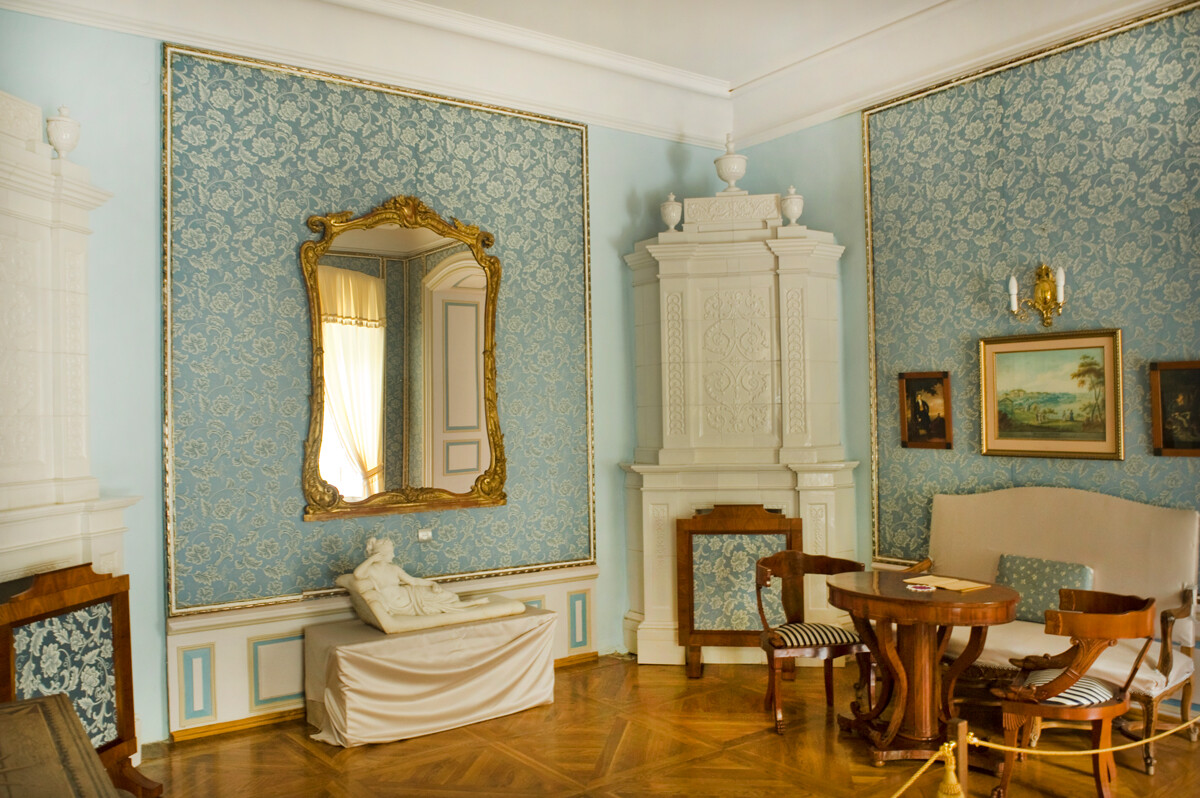
Khmelita estate. Manor house, blue living room with white ceramic stove in neoclassical style. August 23, 2012
William BrumfieldFirst published with extensive censor’s cuts in 1833, the play appeared in its full, original version only in 1861. Written in rhymed iambic lines, this masterpiece became an instant classic. Its incisive portrayal of human foibles is delivered in seemingly effortless language and witty phrases that are known to every educated Russian.
Griboyedov’s fate, however, took a tragic turn. After military service during the war against Napoleon, Griboyedov moved to St. Petersburg in 1815 and, in the Summer of 1817, entered the diplomatic corps. With ready access to high society, he was accepted into a lively literary milieu and made the acquaintance of influential writers such as Alexander Pushkin.
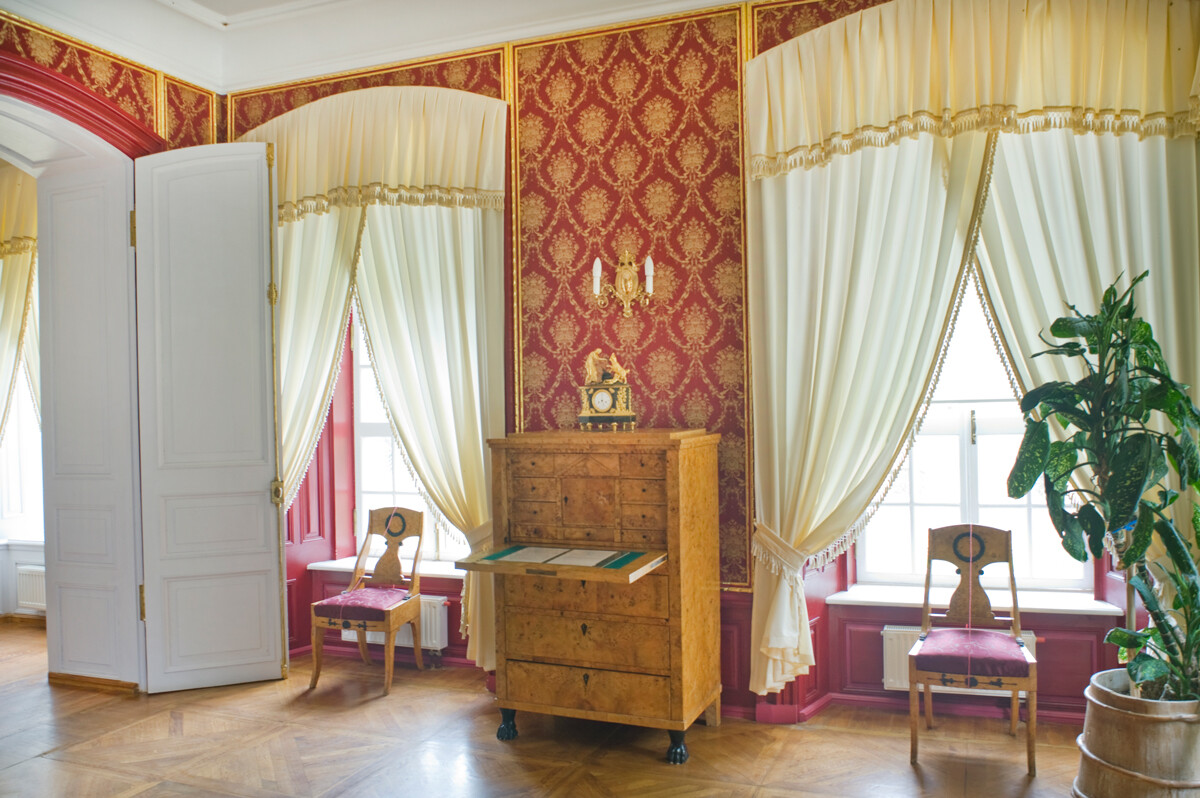
Khmelita estate. Manor house, study. August 23, 2012
William BrumfieldIn the midst of this social whirl, Griboyedov was in 1818 offered a diplomatic posting to the United States. He, instead, accepted a position with the mission to Persia, whose tense relations with Russia would ultimately lead to war. During the next several years, his service alternated between Persia, which he first visited in 1819, and Tiflis (Tbilisi), capital of recently acquired Georgia.
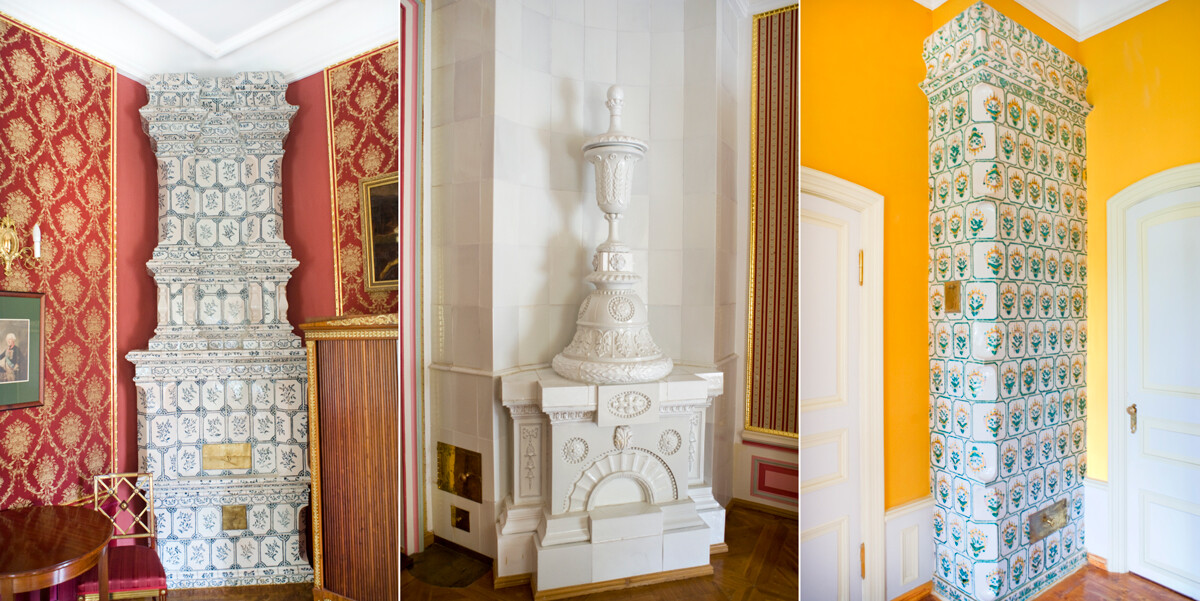
Khmelita estate. Manor house. Left: study, ceramic tile stove with floral motifs. Center: dining room with white ceramic stove in neoclassical style. Right: boudoir, ceramic stove with bouquet motif. August 23, 2012
William BrumfieldAt the beginning of 1823, Griboeydov took a leave from diplomatic service and moved to the Moscow area, where he continued work on his eventual masterpiece, ‘Woe from Wit’. Returning to service in the Summer of 1825, he undertook a prolonged journey back to the Caucasus.
Upon arrival in Tiflis in January 1826, he was placed under arrest for suspected complicity in the Decembrist uprising, which had occurred during the preceding month. Although Griboyedov knew participants in the conspiracy, he was eventually released for lack of evidence of direct involvement.
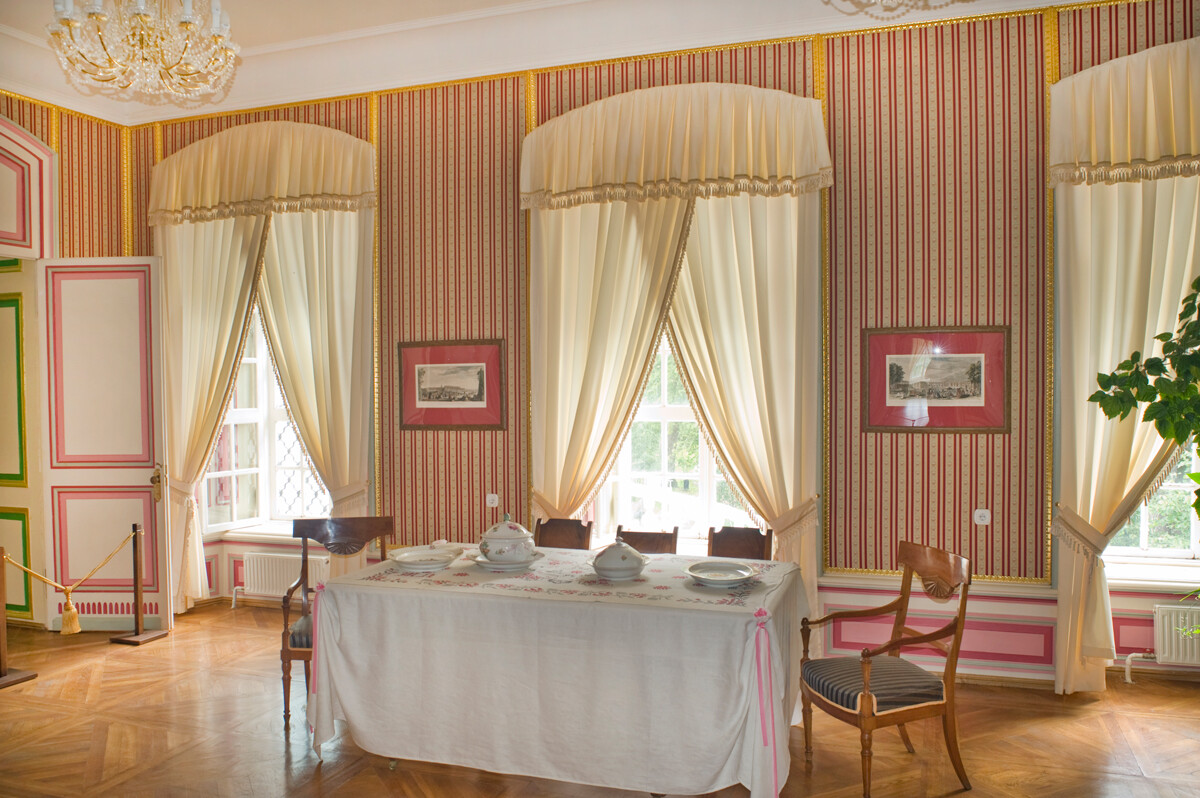
Khmelita estate. Manor house, dining room. August 23, 2012
William BrumfieldRestored to diplomatic service in Tiflis, Griboyedov played an important role in diplomatic negotiations during the Russo-Persian War (1826-28), which concluded with the Turkmenchay Treaty of 1828. Returning from St. Petersburg after presenting the treaty, he arrived in Tiflis in the summer of 1828 and, at the end of August, married 15-year-old Princess Nina Chachavadze, daughter of the Georgian poet Alexander Chachavadze. These few idyllic weeks were the only time with his beloved.
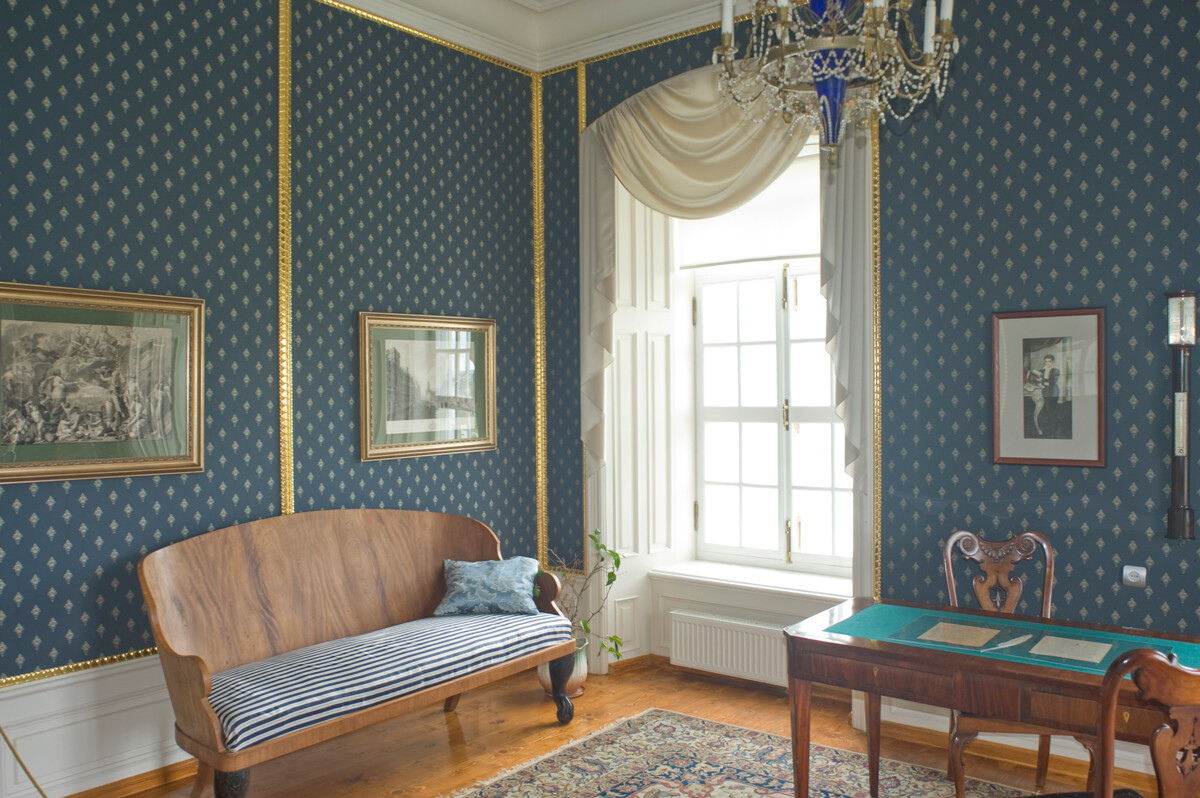
Khmelita estate. Manor house, divan room. August 23, 2012
William BrumfieldIn January 1829, Griboyedov returned to Persia as the head of the Russian mission. Griboyedov left his now pregnant wife at the Russian residence in Tabriz, but he himself accompanied the main diplomatic group to the capital, Teheran, where passions were still inflamed by the terms of the Turkmenchay Treaty. On January 30, the Russian mission was stormed by an enraged mob who suspected the Russians of harboring fugitives from a local harem.
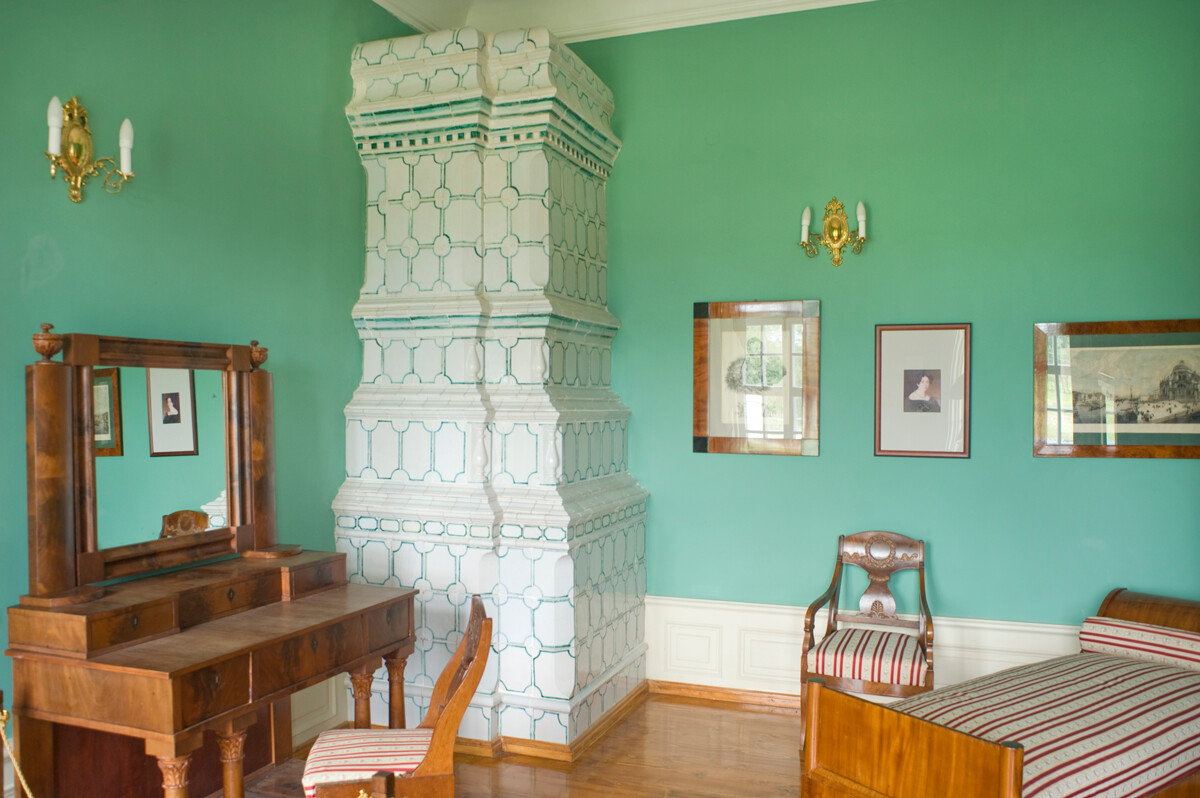
Khmelita estate. Manor house, library, with patterned ceramic stove. (Room where the young Alexander Griboedov stayed). August 23, 2012
William BrumfieldOf the 38 Russians, all perished but one, who survived in hiding. Griboyedov was killed during the fighting and apparently thrown from a window. First decapitated, his corpse was subjected to prolonged mutilation that left the body unrecognizable. By extraordinary coincidence, Pushkin saw the remains in a cart on the Caucasian road back to Georgia. The only recognizable feature was a finger that had been deformed by a dueling injury in 1818.
Griboyedov’s remains were buried at the Church of St. David on Mount Mtatsminda in Tbilisi. Nina, who had safely returned to Tiflis, learned of the death despite attempts to conceal it. The shock of the horrifying news led to premature labor and loss of the child. Nina Griboyedova lived until 1857 and remained devoted to the memory of her husband.
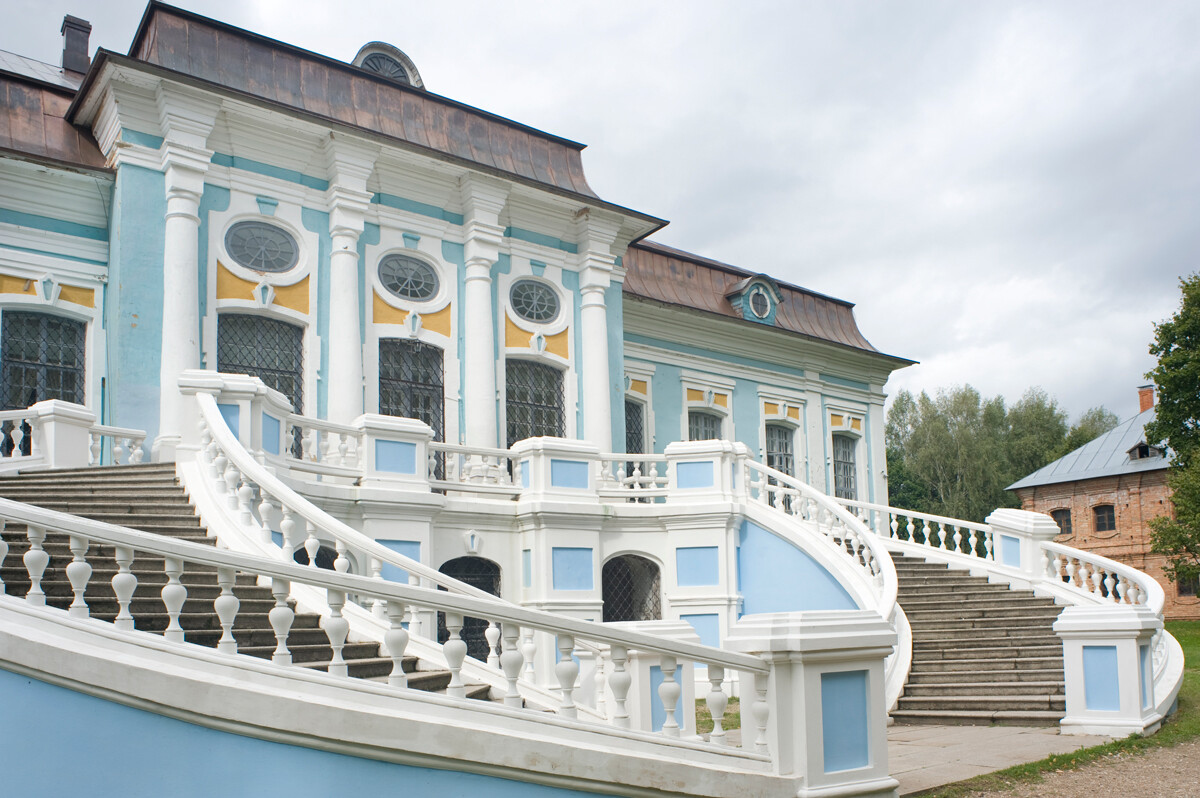
Khmelita estate. Grand manor house, park facade. August 23, 2012
William BrumfieldSuch was the doubly tragic fate of a brilliant Russian writer, who, during his youth, had enjoyed so many pleasant visits to Khmelita. During the latter part of the 19th century, the grand Khmelita manor entered a period of decline until 1894, when the estate was purchased by Count Peter Geyden, a prominent nobleman of liberal political beliefs. He not only carefully restored the mansion and its furnishings, but also added an extensive collection of European paintings.

Khmelita estate. Grand manor house, park facade. October 15, 1992
William BrumfieldAfter the revolution, the estate was nationalized and the contents of the mansion dispersed. Remarkably, the architectural ensemble survived not only the turbulent years of revolutionary conflict (when so many others were destroyed), but also the terrible battles in the Vyazma area between the Fall of 1941 and the Spring of 1943. For much of this time, the mansion served as German staff headquarters during the months of occupation.
After the war, a series of missteps on the part of the local kolkhoz resulted in a major fire and the threat of total demolition - the fate of so many other estates. Fortunately, noted restoration specialist Peter Baranovsky (1892-1984) brought an end to the outright destruction in the late 1960s.
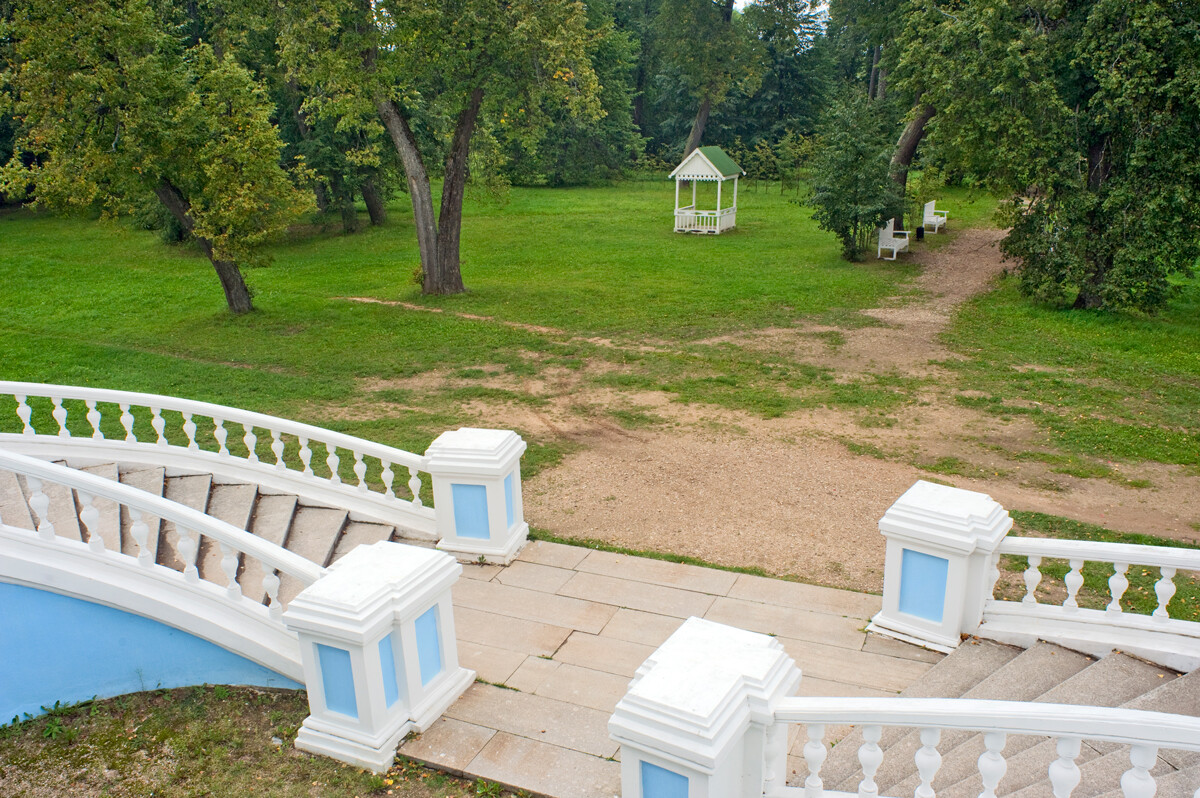
Khmelita estate. View of park from manor house stairway. August 23, 2012
William BrumfieldHowever, the long process of restoration began only with the involvement of Victor Kulakov, a former mechanic, who by happenstance became acquainted with Baranovsky and the Khmelita project. Through ceaseless efforts during the 1990s, the resurrection of the mansion and estate ensemble took its course under the direction of Kulakov.
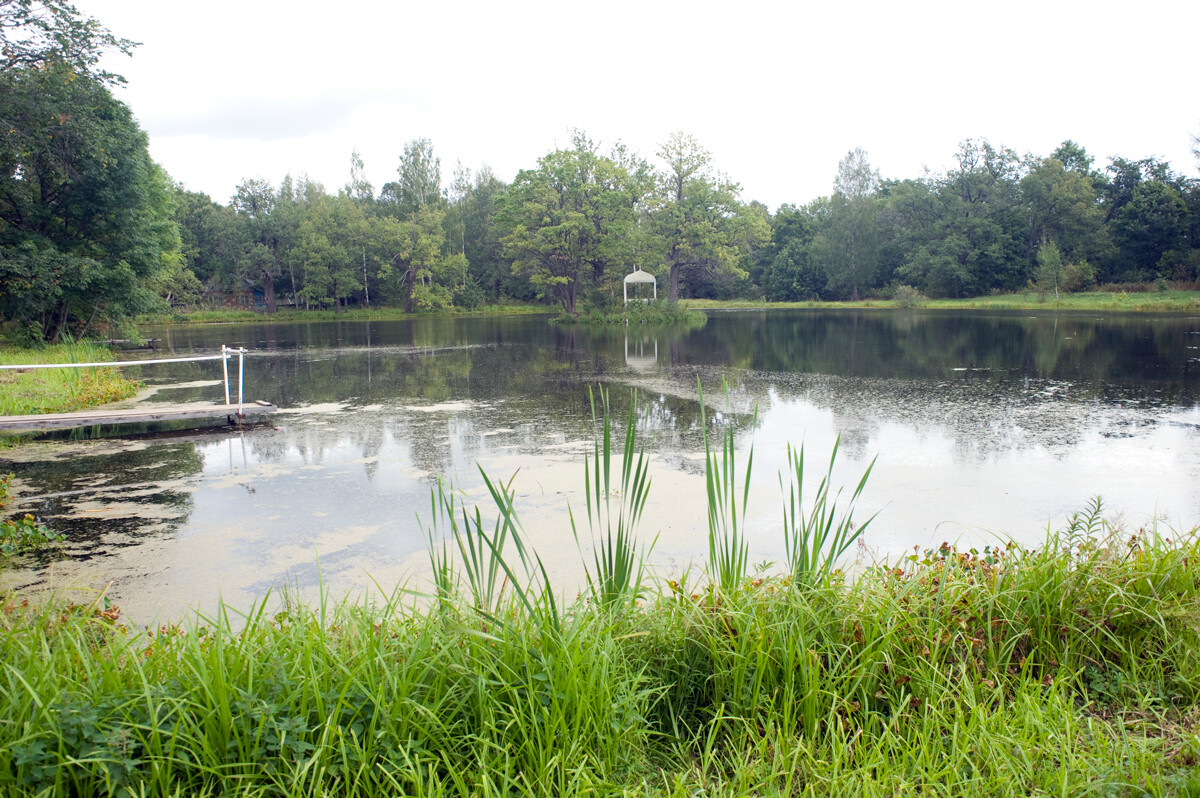
Khmelita estate. Pond in park. August 23, 2012
William BrumfieldThe mansion has now been superbly restored and serves as a museum dedicated to Alexander Griboyedov. Where possible, original decorative detailing has been preserved on the interior and the rooms on the main floor have been elegantly refurbished in the style of the early 19th century. The mansion’s park façade, once again, opens onto an appealing landscape park. Reconstruction work has also improved the ensemble’s service buildings and the Church of the Kazan Icon of the Virgin.
One of the nearby service buildings has been converted to a museum devoted to Admiral Pavel Nakhimov (1802-55), known, above all, for his heroic efforts in the defense of Sevastopol during the Crimean War. Nakhimov was born at the neighboring estate of Gorodok, which, like most country estates, did not survive the turbulence of the 20th century. All the more, then, can we appreciate the revival of Khmelita as an active museum, beautifully situated and accessible to all visitors interested in the rich cultural history of the Russian country estate.
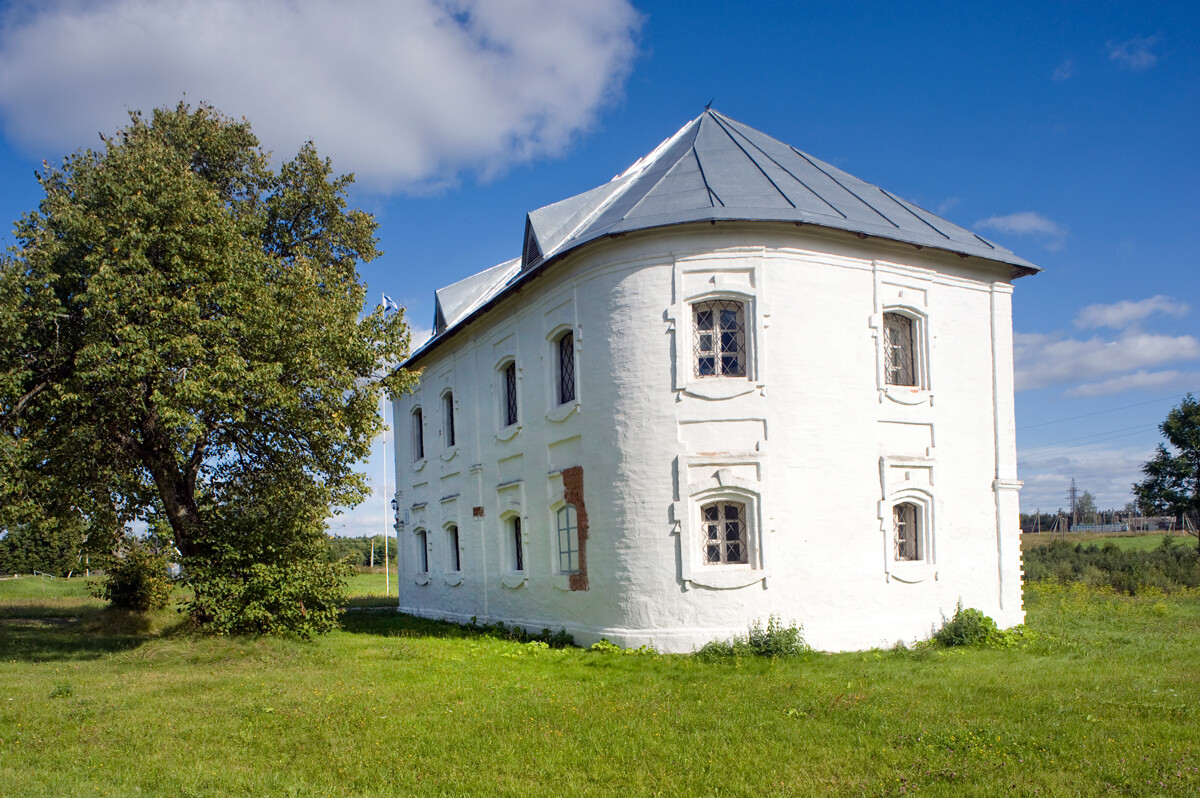
Khmelita estate. West service building, now used as Admiral Nakhimov museum. August 23, 2012
William BrumfieldIn the early 20th century, Russian photographer Sergey Prokudin-Gorsky developed a complex process for color photography. Between 1903 and 1916 he traveled through the Russian Empire and took over 2,000 photographs with the process, which involved three exposures on a glass plate. In August 1918, he left Russia and ultimately resettled in France where he was reunited with a large part of his collection of glass negatives, as well as 13 albums of contact prints. After his death in Paris in 1944, his heirs sold the collection to the Library of Congress. In the early 21st century the Library digitized the Prokudin-Gorsky Collection and made it freely available to the global public. A few Russian websites now have versions of the collection. In 1986 the architectural historian and photographer William Brumfield organized the first exhibit of Prokudin-Gorsky photographs at the Library of Congress. Over a period of work in Russia beginning in 1970, Brumfield has photographed most of the sites visited by Prokudin-Gorsky. This series of articles juxtaposes Prokudin-Gorsky’s views of architectural monuments with photographs taken by Brumfield decades later.
If using any of Russia Beyond's content, partly or in full, always provide an active hyperlink to the original material.
Subscribe
to our newsletter!
Get the week's best stories straight to your inbox